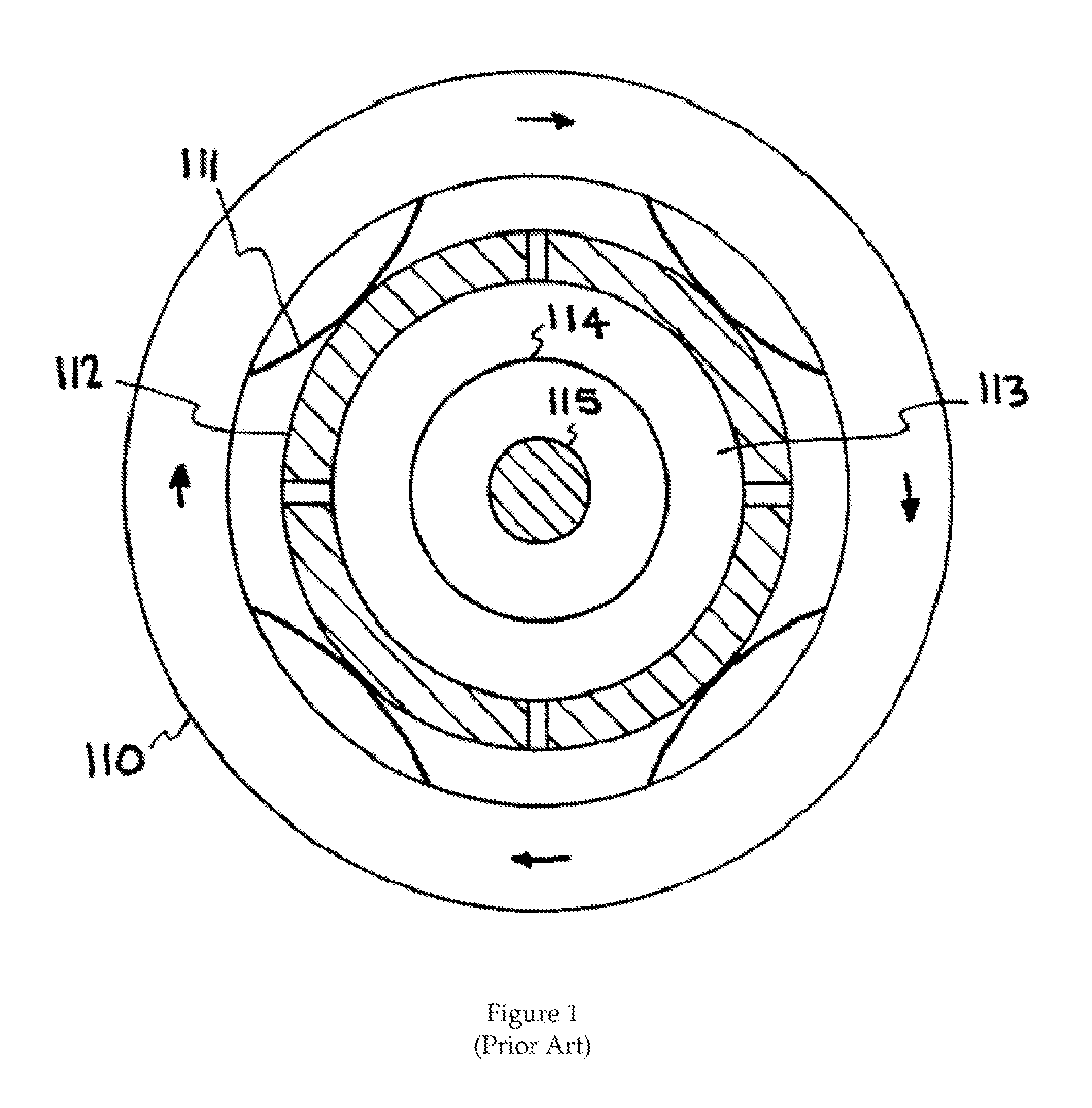Centrifugally decoupling touchdown bearings
a technology of centrifugally decoupling and bearings, which is applied in the direction of sliding contact bearings, magnetic bearings, mechanical bearings, etc., can solve the problems of well known friction and wear problems, mechanical bearings, air bearings, and poorly adapted for vacuum use, etc., and achieve the effect of reducing friction and wear, and improving the service li
- Summary
- Abstract
- Description
- Claims
- Application Information
AI Technical Summary
Benefits of technology
Problems solved by technology
Method used
Image
Examples
Embodiment Construction
[0022]It is required for a Dynamically stable magnetic suspension / bearing system to operate successfully that mechanical or other means be provided to maintain stability when the rotating element is at rest, or when rotating below a low critical speed determined by the design. To accomplish this end various elements can be used, whereby centering elements act below a critical speed, and are thereafter disengaged, for example by centrifugal action. A prior art centrifugally disengaging mechanical bearing is shown schematically in FIG. 1. It is comprised of an outer (rotating) element 110, spring elements 111, and retainer quadrants 112. Retainers 112 remain in contact with the outer race 113 of a ball bearing, the inner race 114 of which is non-rotating and which is held in position by shaft 115. As shown, a ball bearing acts on the rotating element at zero or slow speeds, and then is disengaged by the action of spring-like elements 111 that expand under the influence of centrifugal ...
PUM
| Property | Measurement | Unit |
|---|---|---|
| critical speed | aaaaa | aaaaa |
| speed | aaaaa | aaaaa |
| tension | aaaaa | aaaaa |
Abstract
Description
Claims
Application Information
 Login to View More
Login to View More - R&D
- Intellectual Property
- Life Sciences
- Materials
- Tech Scout
- Unparalleled Data Quality
- Higher Quality Content
- 60% Fewer Hallucinations
Browse by: Latest US Patents, China's latest patents, Technical Efficacy Thesaurus, Application Domain, Technology Topic, Popular Technical Reports.
© 2025 PatSnap. All rights reserved.Legal|Privacy policy|Modern Slavery Act Transparency Statement|Sitemap|About US| Contact US: help@patsnap.com



